February 6, 2018
In December, when I made the videos of the two Free Bass accordions playing Silent Night, I noticed that the sound captured from the accordions was ok… but not much more than that, and I knew that I wanted to make the move from dynamic to condenser mics one day.
Condenser mics are more sensitive, give a better quality of sound, but they absolutely must have a 48 volt phantom power source. Since my Mackie 1640i mixer has the ability to turn on or off phantom power on a per channel basis (on any of it’s 16 channels), this is a complete non-issue for me, but it does mean that if I use a condenser mic, it must be used through the mixer… which is one of the main reasons I have one in the first place. Having a higher quality mixer also means that your preamps will be of much higher quality and that means less noise and better quality of all sound captured. However, how accurate and good you sound is ultimately dependent on the first link in the chain, and that all starts with the microphone.
Traditionally, if you wanted a really nice condenser microphone, you had to open the wallet wide and shell out some seriously big amounts of cash… we’re talking several thousands dollars!
With the advent of digital music and technical advances, prices started dropping and quality kept increasing over the years. Today one can get a really nice microphone for a fraction of the cost. Something in the $500-$1000 range will offer you professional results under the right circumstances, however, even that amount is a lot of money for an amateur like me at this point in time. I don’t have $1000 to burn on microphones… so where does that leave me… am I doomed to never be able to record my accordions with even a modicum of good quality sound?
Nope!
This is where the Asian market again comes to the rescue with some bargain basement condenser mics that seem to have the reputation of being able to capture sound with pretty good results at an amazing price point.
Now, one day soon I will invest in higher end condenser mics, but right now I want to get started in experimenting and making a few musical projects. Even with a DIY amateur mindset, I do want to improve the sound over what I can do now. Being always on the lookout for deals, I think I found the deal of the century… kinda.
Because of my desire to get condenser mics quickly and my current non-existent budget, I researched for a couple of weeks and found the cheapest, lowest priced condenser microphone out there that had the reputation of being able to capture fair quality sound. Before I tell you the price, here are the specs:
Microphone-core: Diameter 16mm
Polar Pattern: Cardioid
Frequency Response: 20Hz-16kHz
Sensitivity: -38dB?2dB(0dB=1V/Pa at 1kHz)
Output Impedance: 150db (at 1kHz)
Load Impedance: 1000ohm
Equivalent Noise Level: 16dBA
Max SPL: 132dB
S/N Ratio: 78dB
Electrical Current: 3mA
Voltage: 48 volt phantom power
Body weight: 11oz/316g
Color: Black/Gold
Yeah, nothing stunning in terms of specs. As a matter of fact, in the world of $500+ condenser mics, these specs are definitely weak sauce… but in the world of a $19.99 condenser mics (delivery included), these specs are stunning! Yup, you read that right, a sub-$20US condenser microphone! Even at that price, it comes with a windsock, shock-mount and let me repeat, includes the delivery too… so I placed an order for two of them.
Here are a couple of pictures:
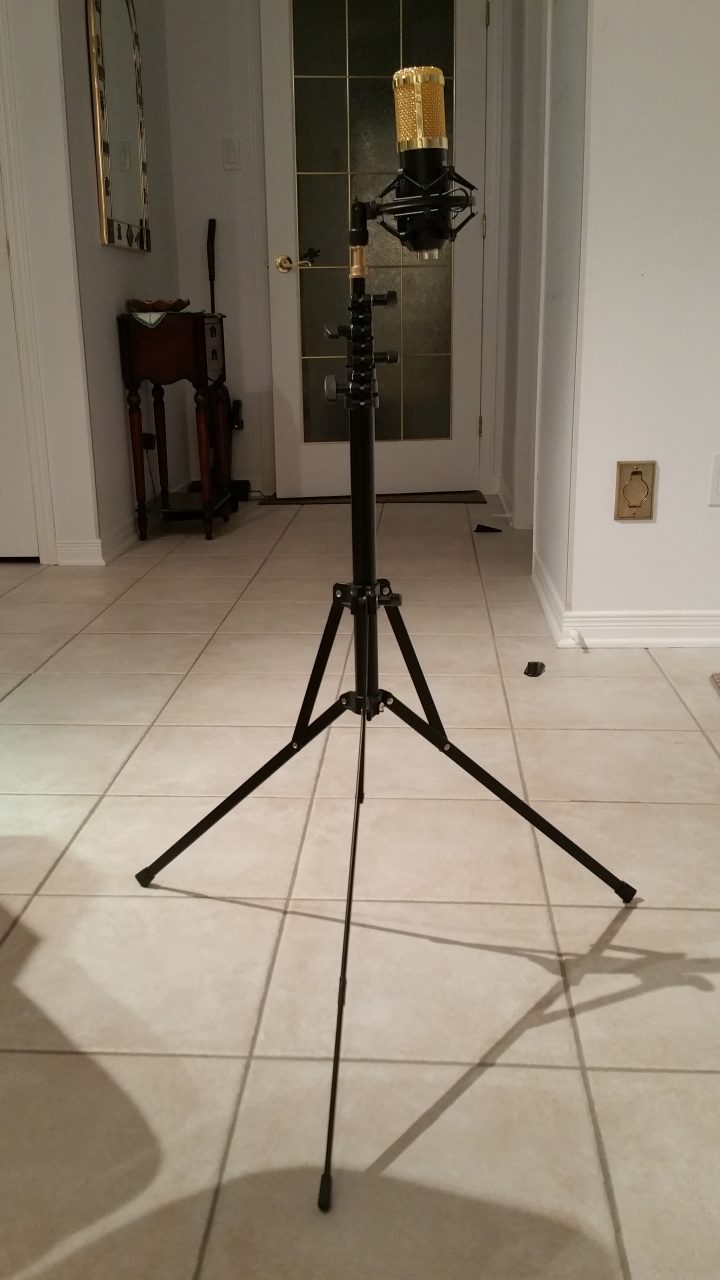
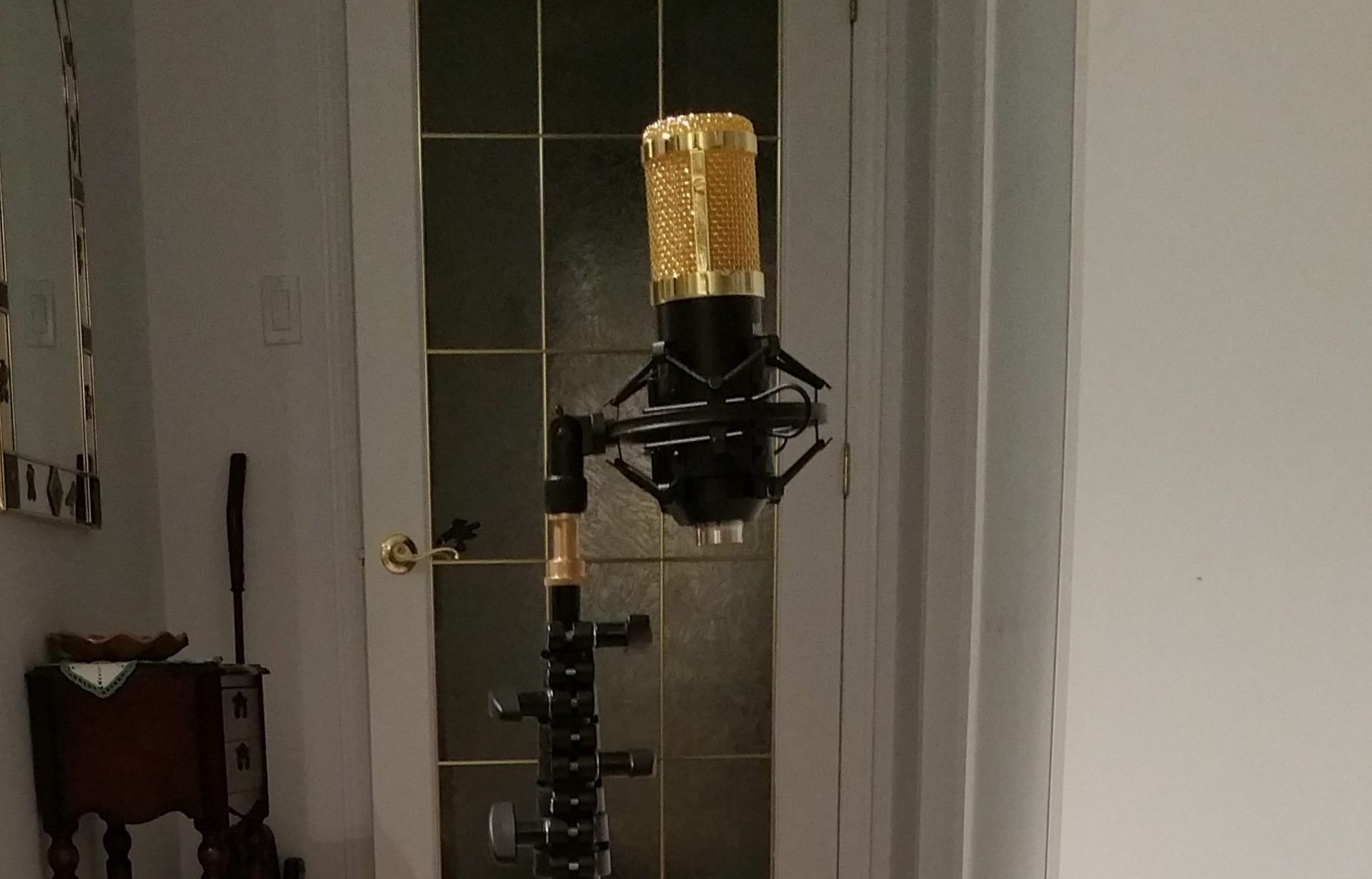
I tell you, I am one fortunate man in many wants but in this case I am referring to those mic stands. Back from my photography days I have a pair of small Manfrotto Nano tripods and these make PERFECT stands for my microphones.
Great little stands, super reliable and stable, but I would not suggest these for others because each one costs $110US… that’s the price of five and a half microphones! Instead look for cheap $10 mic stands, however, make sure that they can come up to 2-3 feet off the ground and are stable. One small fall and these mics will likely break and become non-functional.
Let’s take a look at a couple of reviews from other people about this bottom-of-the-barrel condenser mic and get an idea of how this mic sounds for other people:
How about something ridiculous… a comparison of this $20 mic and a pro quality $3600 mic? No, don’t expect it to win, however, it does a LOT better than you would think!
How about tearing one apart to take a look inside?
Ok, at least now we know where we stand, right? This stuff is not even basement quality, we are talking subterranean here… the lowest of the low, the crappiest of all the crappy… and yet, how well does it capture instruments, or more specifically, how well does it capture my acoustic accordions?
Well, before I show that, I am going to tell you in advance that I am about to cheat. I plan on using all the tricks I know to make this thing sound as good as I can. “Why would you do that?” you ask? Good question… two reasons.
First, knowledge is power, and in this case, it is going to permit me to draw out the best that this mic can do by itself, even if it is a bit rubbish. Anything I do is going to make these El Cheapo mics sound better than if left to their own, so why not? Besides, these are all tricks that other sound engineers are doing in real life, often even with those $10,000 and higher mics too!
Second, it’s going to be free! The tricks I happen to want to use are already integrated in both my hardware and software. I am talking good gain structure, software equalization, limiters, noise gates, reverb, compression and anything else I can think of. On the hardware side I am talking of using a high end quality mixer (Mackie 1640i) with boutique quality super clean preamps and a full and clean 48 volts of phantom power to each mic. Let’s see just how good I can make this mic sound for me in my circumstances.
ADDENDUM: January 24, 2018
OK, so my condenser mics have arrived early! They were supposed to have arrived on the 28th, but, nope, they came 4 days earlier… BONUS!
I made an unboxing and review video, here below, but a small heads-up… the audio on this video is pretty bad. I made the mistake of first using an IN camera mic and second, having the furnace running (one kind of needs a functional furnace when it’s -20C outside). I tried cleaning it up, but it was still pretty ugly. So, you kind of have to bear with me this time… sorry about that.
Let me promise you that this is the last video I will ever make with bad voice audio in it, as I have come up with a solution for this, and the results of that will be visible (audible?) on all of my videos that I plan to release on the Roland FR-8X V-Accordion Mild to Wild series as well.
Now, let me present to you the unboxing video with the crappy audio:
Here is how I addressed the vocal recording situation moving forward… I again pulled out my DIY skills and rewired this:
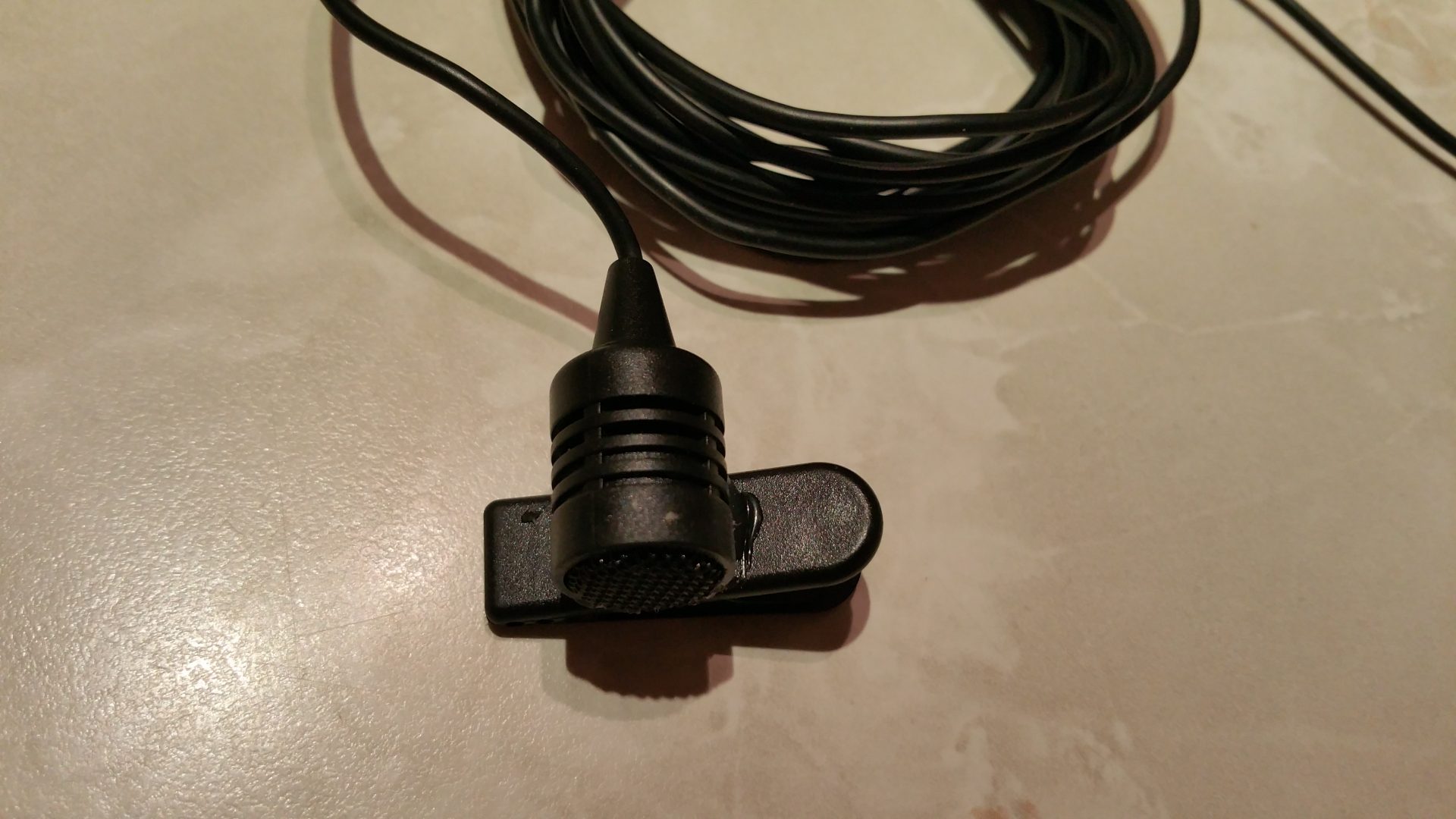
It’s just a cheap little lavalier mic that came with an old GPS unit that we once had a long time ago. The GPS unit is now gone a long time, but the lavalier mic was taking up room doing nothing in one of my drawers, so I decided to use it. First issue, I hot glued the little plastic clip so that I could clip it to my shirt, but the bigger issue was that the plug was the wrong type (it was TR and I needed TRRS for it to work for me) and did not work with my chosen recording device… my cell phone. I needed to get different connector and rewire it properly.
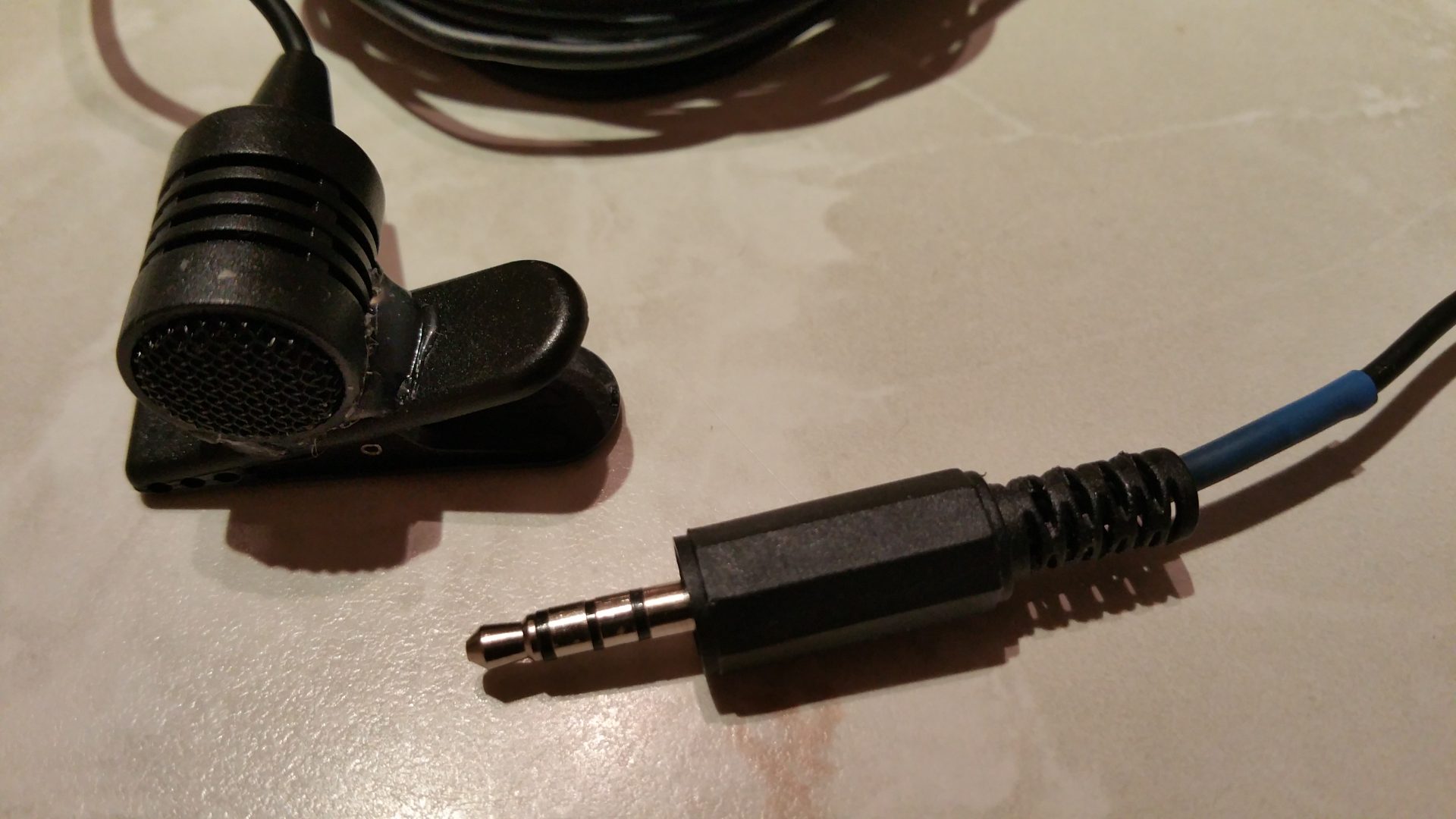
With this connector properly connected and soldered to the right connectors, this mic actually does a pretty good job of capturing my voice, and again, the price was right for me… free! The connector, however, was a reasonable $1.25. So this plug, and 10 minutes with my soldering iron, and I will have much better vocals in all my future videos… I promise.
Not to be one that doesn’t find more things to address in any new challenge, the next challenge was related to recording the acoustic accordion. “What problem ?” you might be asking… well, when recording one single acoustic accordion, there is no problem, however, what if I wanted to create a multitrack of two or more acoustic accordion parts? Normally one records the first accordion, then plays the first recording and plays along with it, saving it to a second track, however, if your microphones capture the sound of your first recording (if you play it through your speakers), the audio comes out muddy and of poor quality. Basically, this sucks and is very undesirable!
The solution is relatively easy, do not let the recorded track be heard by the mics. Easy to address, just wear big tight and sealed headphones… but if you wear headphones, though it isolates the sound, the problem that is that wearing those things in a video makes you look ridiculous, so my solution was to again go out and make another quick, little DIY project. Two plugs and 15 feet of pro-grade microphone wire and a set of fairquality earplugs are the better solution… here let me show you!
We start with some good quality mic wire…
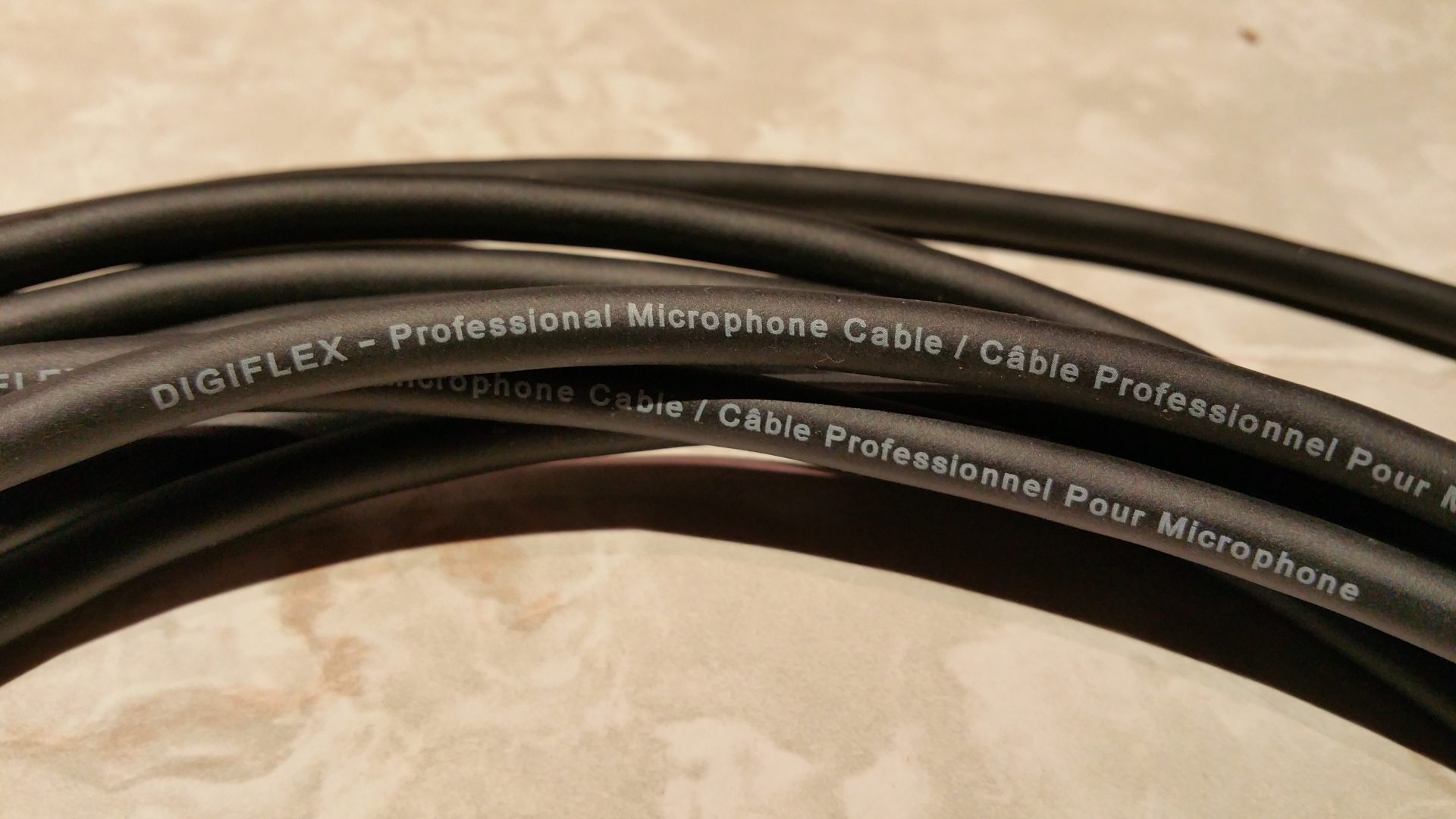
A nice quality 1/4″ male stereo plug on one side, and…
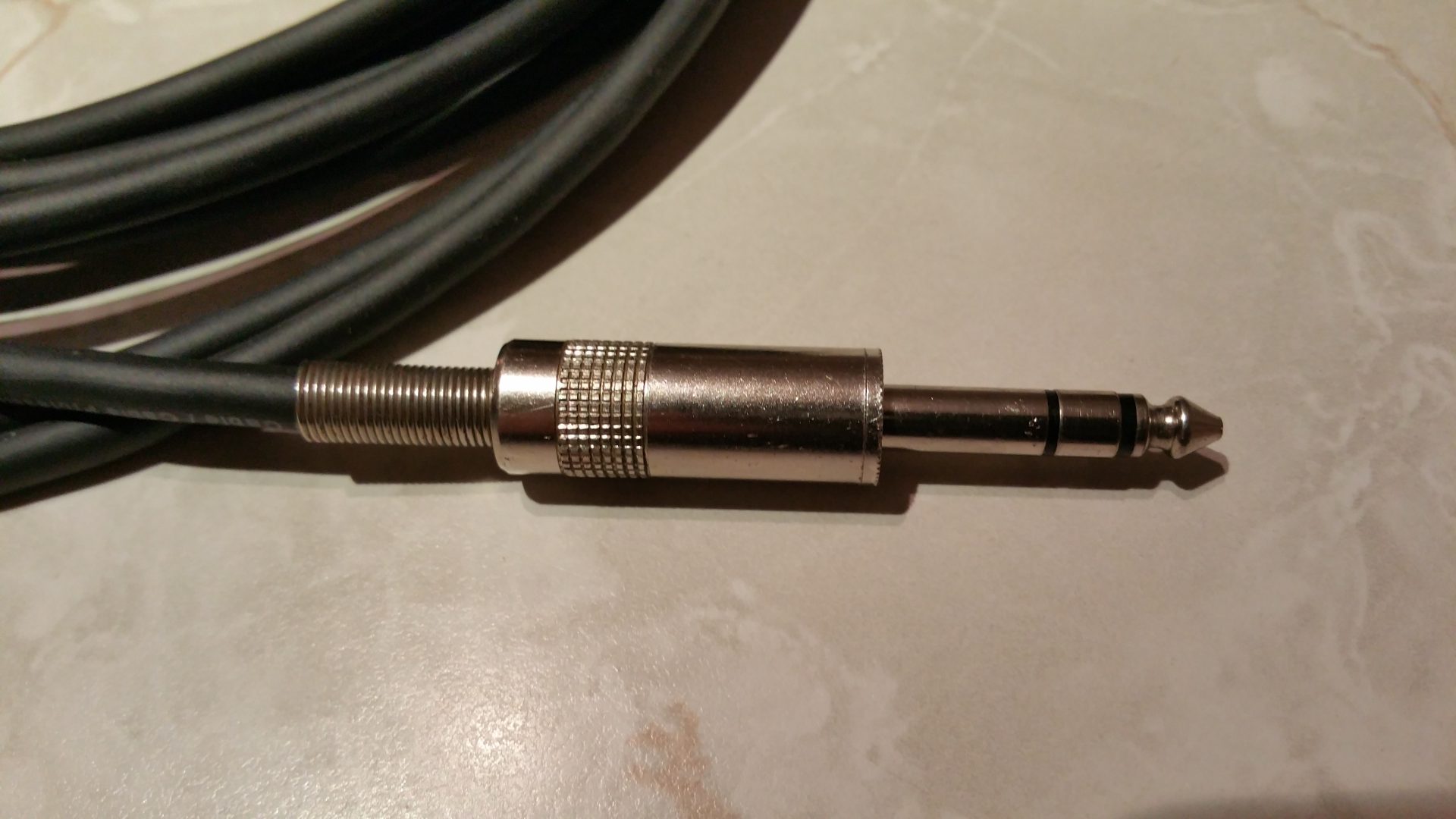
A 3.5mm female stereo plug on the other side…
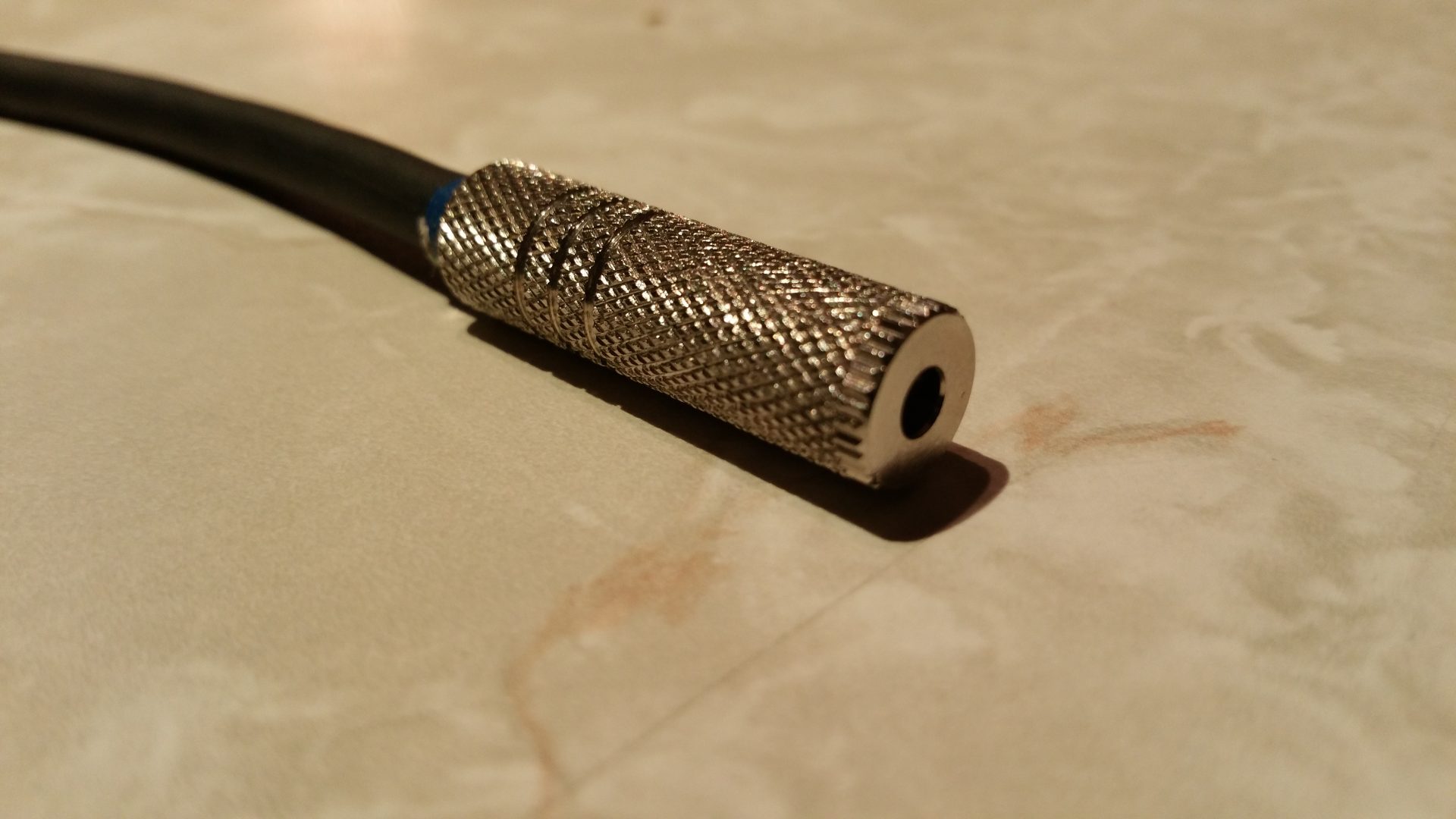
Toss in some ear buds, and you are all set!
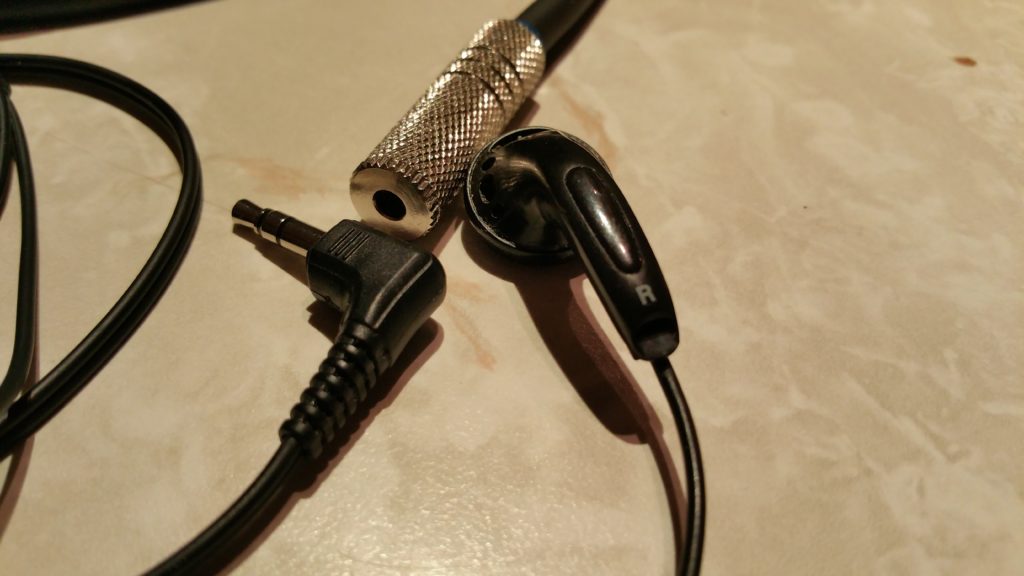
Connect them together, and voila!
At least now I will be able to plug in this wire in to my mixer’s headphone jack or any stereo output source for that matter, and control exactly what I am hearing… both the recorded accordion parts and whatever I am playing in accompaniment on the other part while recording that track live, and though yes the earbuds are visible, they’re not the big, ugly headphones on display in the video and they are not loud enough to be heard by the condenser mics, but permit the sound track to be heard by the performer (me!)… the near perfect solution! I chose black earbuds because I can place then in my ears and have the wire hanging behind my hears and down my back making them almost invisible as I record the video.
WAIT! So what do the mics sound like???
Ok, ok… they sound like this:
Yes, they are sensitive as hell, and now I have to admit something… I had the sound of the furnace in the video that I almost successfully removed, but there was some loss in overall sound quality (if I want the best sound… turn off the heating and AC, and I plan to do that with the more serious recordings!).
They also picked up every mechanical clack from the bass machine and even my breath was CLEARLY heard every time I hit a quiet spot in the song! I know that I need to do some more experimenting and find the sweet spot for recording my acoustic accordions. I should be able to improve on both those issues with more experimenting
One thing that I already learned… the recording above was with the foam windsock covers on the mics, and I later learned that the mics sound better without them. So, in the future… no foam windsock covers. Besides, they look better without them… in a gaudy gold kind of way. So, that leaves me with two final but important questions:
- Is this setup better than the one I had while making my Silent Night videos? YES! First, there is a stereo image, there is better tonality, there is more dynamic range and the overall sound is much improved. Basically I took that $20 mic, and made it sound pretty good. Because they are more sensitive, I now also know that my environment is NOISY and requires more work to get better quality results.
- How do these mics compare to better and more expensive mics? Here is a shot of reality… yeah, these things sound marvelous at $40 for the two mics, but they fall quite a way short if compared to a pair of those higher quality condenser mics that I plan to purchase in the future. For now, though, they are great to play around with, and I am enjoying them and learning all kinds of things in the process, and for that reason alone, this has been the best $40 I have spent in a long time!
Now, as mentioned, my basement is not the best place in the house to make recordings on sensitive microphones… unfortunately, it is the roomiest place in the house where I can do what I want and no one disturbs me, so the fact that it is noisy as heck thanks to a NAS, several computers and has a loud furnace about 6 feet away from the “recording area” are hard challenges to overcome at best and super annoying at worst.
What that means is that I have no choice but to do a lot of background noise removal and this affects the overall quality of any recording I make or, as mentioned earlier, turn off the furnace (and relocate the NAS to the floor for now, further reducing noise in the room).
Now, none of that really makes a huge difference, at least not in my life, and no mic at any price is going to sound good in that kind of an environment, so I live with my challenges, and as long as I am having fun, playing, enjoying and sharing my accordion journey, those issues just aren’t that important… but they are enjoyable and more than adequate for my needs!
October 27, 2018
I just wanted to add an additional opinion since the initial post was made. I’ve used them a bit in outdoor events and in recording an interview, and I must admit, when used in general modes like this, I am really quite happy with the results.
They are not terrible by any means, and no, though they don’t compare to my “expensive” mics, if these were the only mics I could ever afford, I should not let the fact that these are $20 mics deter me from making recordings, if that was all I had.
The big thing is that in both cases I used the Zoom F4, and through it’s amazingly great preamps, high gain ability and fantastic recording quality, it really does draw out every nuance that these mics can produce. These are easily like $100 mics used in this manner and sound way better than they almost have a right to. I am quite happy with the purchase!
Enjoy!